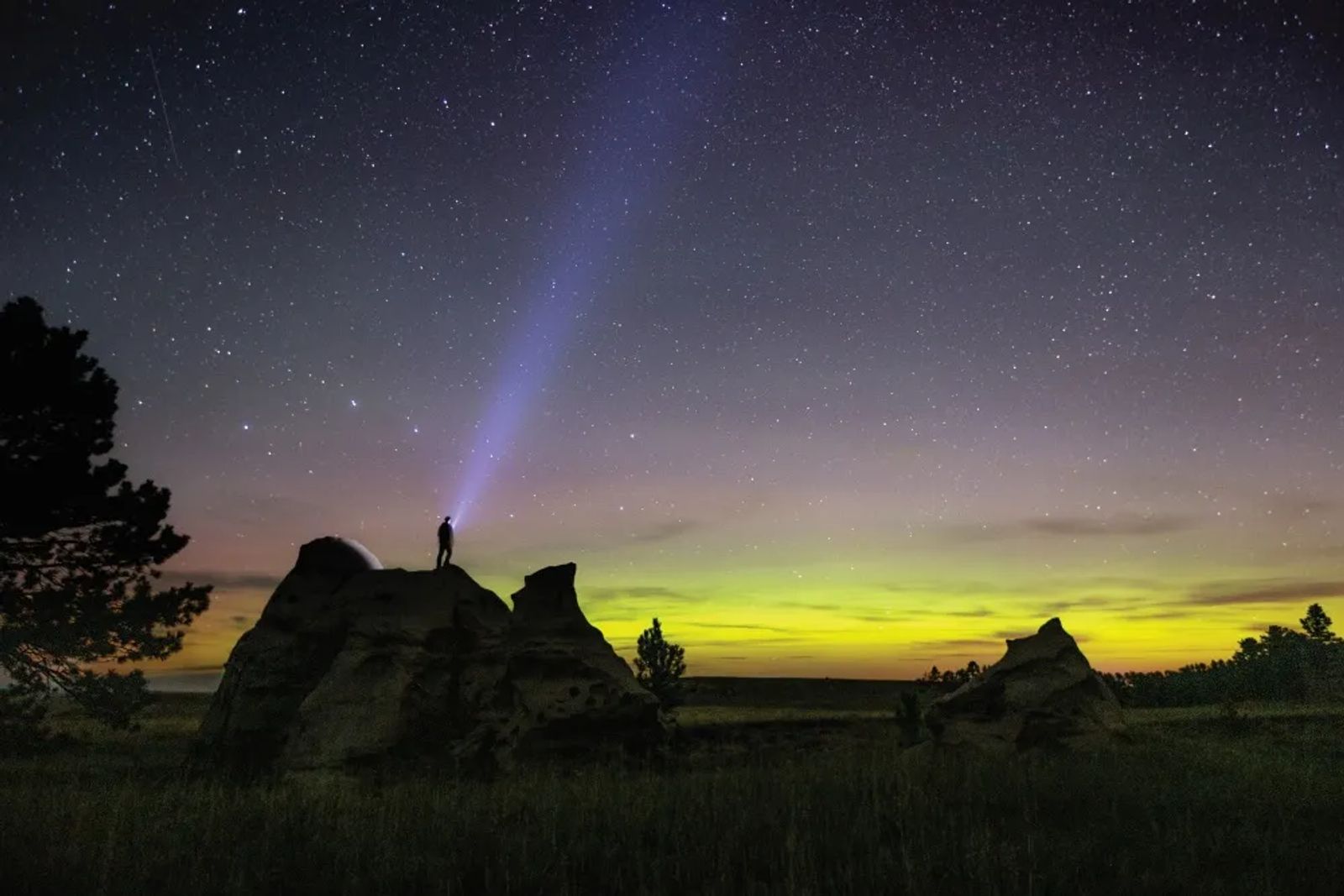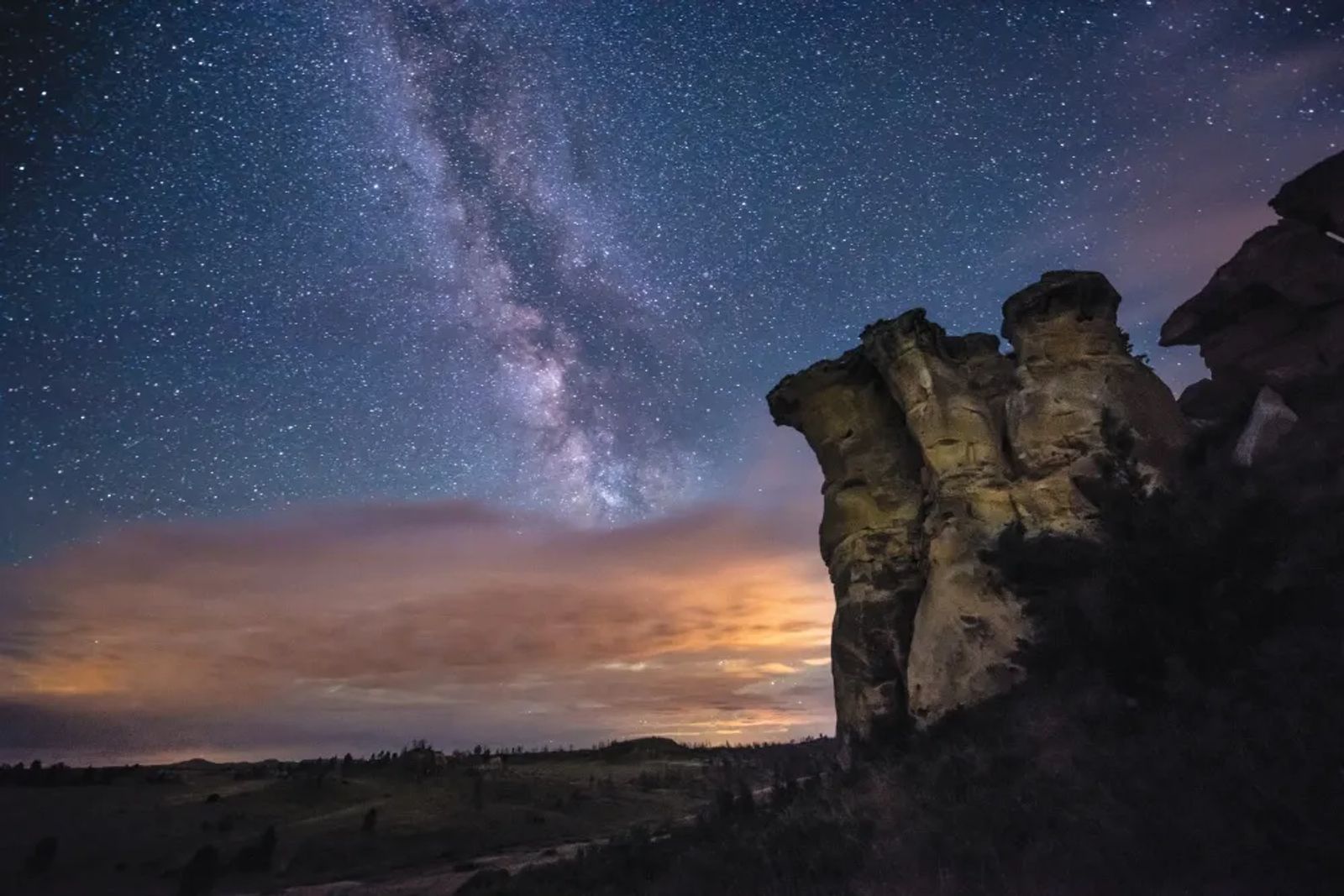
Medicine Rocks night sky | photo by Nathan Satran
Developing a Destination: Montana’s Dark Sky Trail
June 2021
by Brenda Maas; Marketing Director, Visit Southeast Montana
Visit Southeast Montana is managed by the Billings Chamber of Commerce
There’s nothing out here…
That’s a phrase I’ve heard hundreds of times, and I adamantly disagree. Every time.
Yet, how could we use the biggest weakness of the Visit Southeast Montana tourism region – great distances from point A to point B, vast tracts of land, open roads, big skies – and turn it into a strength, I’ve wondered? What does all that space provide for travelers? How do we turn that on its head and position the region as a destination?
I recall a lesson from my 2018 Billings Leadership class: Take your biggest weakness and turn it into your strength.
I believe Montana's iconic moniker, The Big Sky State, was born on the eastern side. As Montanans, we all relish the beauty and majesty of our mountains. And, honestly, the eastern side cannot compete. But should it? Or, should we lay claim to the fact that the high plains are where the skies really are big?
As I mulled these questions, I kept thinking, “What does all that space do for travelers?”
- It creates epic sunrises and sunsets.
- It colors the landscape, like the badlands in Makoshika State Park, a plethora of colors as the sun appears or disappears on the horizon (we see similar with Billings’ Rims).
- It creates seemingly unending vistas, unfettered by buildings, trees, or people.
- It sets the stage for stunning full moons and nighttime hikes.
- It allows for the “golden hour” that photographers and artists will chase -- literally.
- And, it gives us dark night skies – really, really dark skies.

Rosebud County | photo by Alexis Bonogofsky
The average Montanan does not really think much about night skies. We see them frequently. Yet consider this: nearly 80% of North Americans cannot see the Milky Way from their home. That means that 4 out of 5 humans cannot see the Milky Way. Many have never seen it. And, our night skies are disappearing as more and more light pollution creeps across the land. This has been documented with Earth images over the past several decades.
If you build it, they will come.
While mulling how to turn the biggest weakness – our open spaces – into a strength, other tourism partners in Ekalaka, Glendive, Helena, and Missouri River Country (northeastern Montana) were exploring options to attract visitors to our most rural areas. As the saying goes, great minds think alike. And we proposed using the Montana Dinosaur Trail, which has attracted nearly 360,000 visitors, including about 40% non-residents, to 14 facilities across rural Montana in 2019, as a prototype for Montana’s Night Skies Trail.
Tourism partners like Visit Southeast Montana converged with the Montana Eastern Tourism Initiative (Department of Commerce), which provided funds and guidance. Despite a pandemic-related delay, the trail will launch this summer (likely as this article is published). Medicine Rocks State Park*, which received its designation as an International Dark-Sky Association Sanctuary – the darkest of the dark – in late 2020, serves as the trail’s anchor.
In small communities like Ekalaka and Baker, where night sky visitors will likely stay, it doesn’t take huge purchases to affect local business positively. Travelers need food, lodging, fuel, and other goods. The impact of their spending can be measured in proportion. For example, Carter County Museum’s annual Dino Shindig doubles the size of Ekalaka for three days. The same happens during Miles City’s Bucking Horse Sale. Consider the economic impact if Billings doubled in size for three days each year?
Leading the Way
The role of Visit Southeast Montana is a privileged one. In addition to marketing the region, we serve as a conduit between the region’s communities and businesses and the Montana Office of Tourism and Business Development. We look for opportunities to transform normal (like night skies or Western culture or dinosaurs) into something remarkable. We do that by stepping outside of our proverbial box and into the shoes of our potential visitors, looking at our region from their eyes.
The darkest skies are, of course, in supposedly "empty" places. But that is the real beauty of this juxtaposition – what many perceive as empty or weakness is now truly full of strength. This destination development project pulls visitors off the interstate into rural communities that many perceive as "having nothing." But we know the truth. For those who live in these rural communities – their place is everything out here.
*Learn about this dark sky location in Stephanie Hobby’s article On Montana’s Dark Sky Trail
Originally printed in the June 2021 issue of Simply Local Magazine
Never miss an issue, check out SLM's digital editions here!





